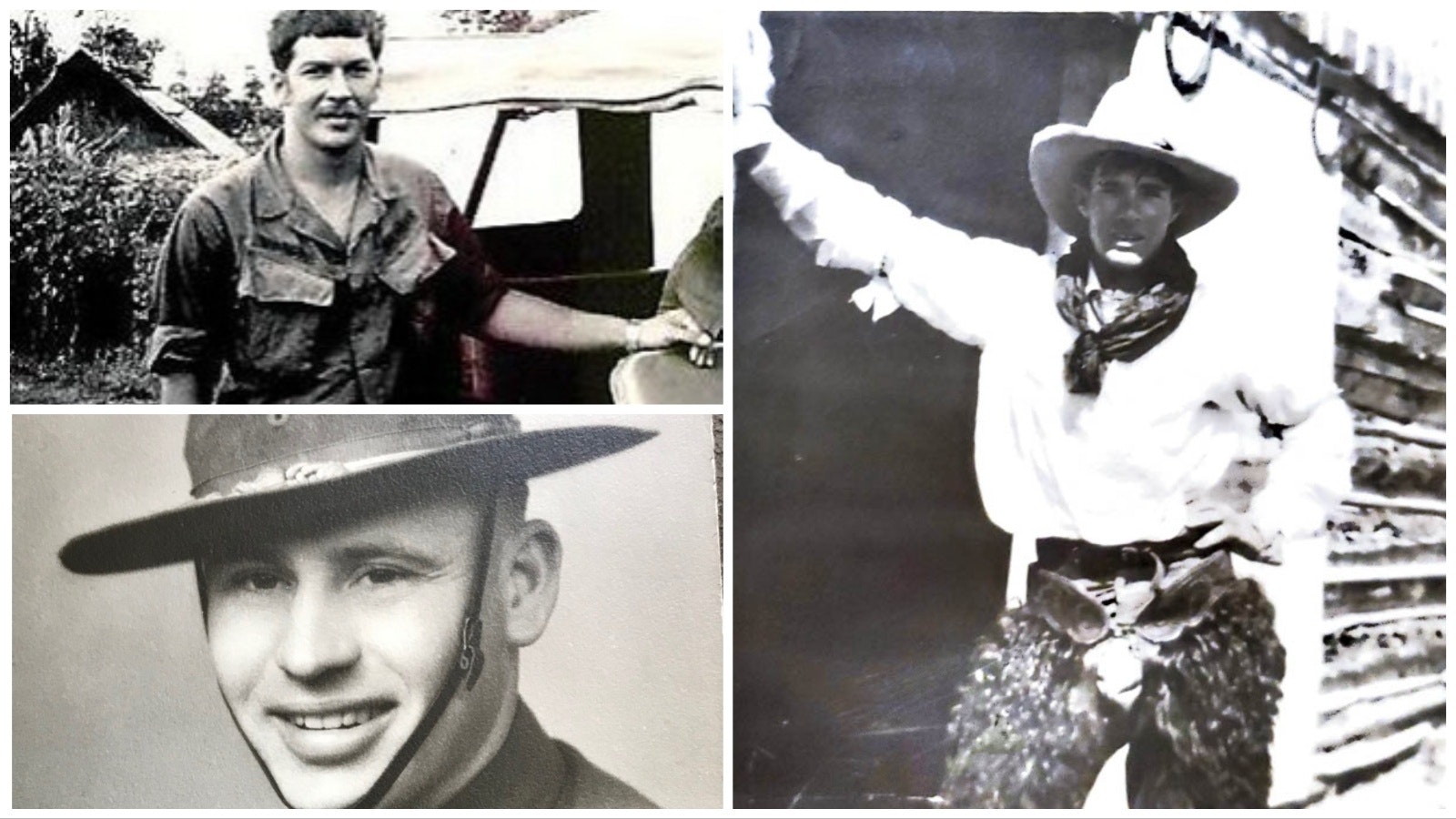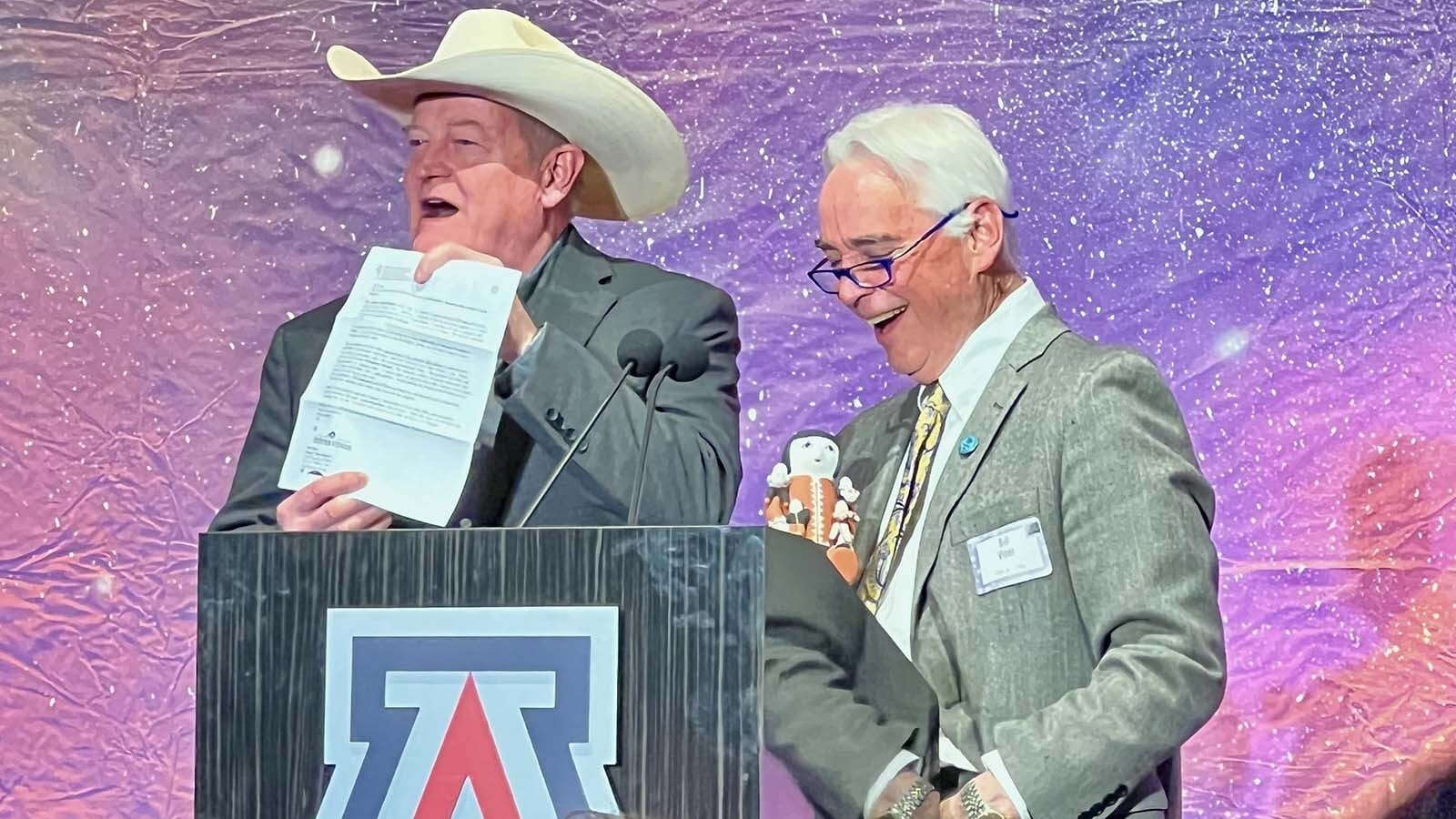Wyoming Cowboy Hall of Fame cowboys have served their country in the Army, Army Air Corps, Navy, and Air Force through conflicts that started with the Mormon War of 1857 and continuing through Vietnam. To celebrate these cowboys, this week the Wyoming Cowboy Hall of Fame opens a new exhibit recognizing the inductees and their connections with the ranching, agriculture, and military history of Wyoming.
The exhibit is now in place at the Wyoming Veterans Memorial Museum in Casper. It highlights inductees who are veterans, demonstrates the image of a cowboy as a symbol of Wyoming, and shows the diversity of Wyoming’s cowboys.
Officially open this week in advance of Wyoming Cowboy and Cowgirl Legacy Week, the exhibit is the first of its kind for the WCHF. It will be in place for the next two months.
The Museum is open Tuesday through Saturday from 9 a.m. to 4 p.m. It is located at 3740 Jourgensen Ave. in Casper, adjacent to Natrona County International Airport.
Cowboy Up!
Church Hill Firnekas of Buffalo enlisted in the army in 1917 and was assigned to Field Remount Squad 910. He was stationed in Florida where there were 10,000 horses and mules to be sent overseas. They shipped out with horses for France but as they neared the landing zone the seas were so rough that they couldn’t get close to the shore.
In true Wyoming cowboy style, Church jumped on a mule and rode him overboard. The horses and other mules followed as they all made it to the shore.
Once in France, Church worked with and cared for the horses and mules. One of his duties was to take horses to the soldiers on the front lines – work done at night when there was less risk from enemy attack.
A century after his military service, in 2017, Church Firnekas was inducted into the Wyoming Cowboy Hall of Fame.
Harold E. “Smitty” Smith’s career as a cowboy started at a young age, but the Sheridan man also served a stint with the United States Army during World War II as a farrier and mule packer, before returning to Wyoming cowboy work. He was inducted into the WCHF in 2018.
Dee Burtch of Alcova, a 2022 inductee, left home during WWI, riding his horse to Rawlins where he intended to board a train and join the army. The Carbon County Sheriff was waiting for him at the train station. Burtch’s mother had telegraphed the sheriff with news that Church’s father was about to die and she needed the young man to return home.
In delivering the message, the sheriff told Burtch him that his family needed him more than his country did. Upon hearing the news Burtch set off for a ride to Casper – making the trip in just nine hours, by stopping at friends’ ranches along the way to change horses.
After his father’s death, Burtch helped his mother raise his four younger brothers. And although he did not enter the Army and fight overseas, Burtch still supported the war effort. When the Army was buying horses for the Calvary during WWI, the Burtch, Sanford and Buzzard ranches had a wild horse round up and drive.
Many inductees into WCHF served during World War II, several in the Korean War, and some during Vietnam like one of this year’s inductees, Larry D. Cundall who was an agricultural advisor with the U.S. Army and was awarded the Bronze Star.
Also being inducted on Saturday are WWII Veterans Woodrow Wilson Moreland of Sheridan who served with the 232nd Army Air Corps and Ross Rhodes of Thermopolis who was in the Army.
Richard Henry Hamilton (profiled earlier in Cowboy State Daily) came west to Fort Bridger in support of Col. Albert Sidney Johnston and the Army during the Mormon War of 1857.
The 10th annual Induction Ceremony for WCHF will be held in Casper on Sept. 15 and 16. That event kicks of Wyoming’s Cowboy and Cowgirl Legacy Week, which was declared by the Wyoming State Legislature in 2019 and is held the third week of September each year.





